How to Prune Viburnums and Other Cane-Growing Shrubs
Keep your plants looking their best by making the right cuts
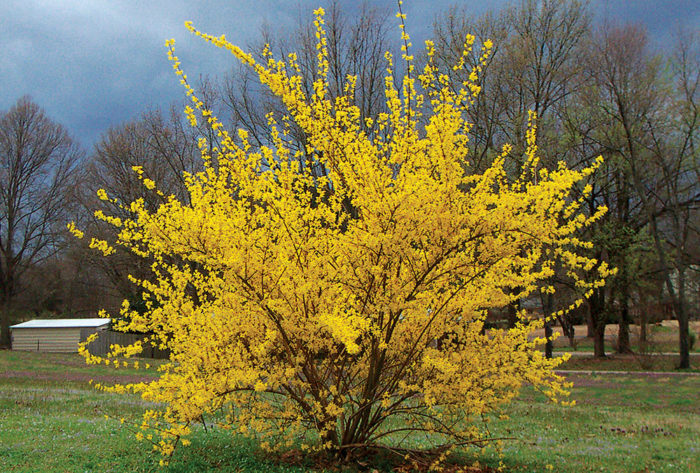
Cane-growing shrubs are some of the most popular garden plants
When it comes to shrubs, you just can’t beat cane-growing types like sweet-scented mock oranges (Philadelphus spp. and cvs.) or most viburnums (Viburnum spp. and cvs.) for seasonal interest and robust form in the landscape. Spouting from the ground like water from a majestic fountain, these multistemmed woody plants have a beautiful, natural, free-flowing habit. They’re easy to grow, and they usually achieve their mature size in three years. Of course, there’s always a flip side to a coin, and with cane-growing shrubs, it happens to be their overgrown appearance that comes with age. Older stems are also more susceptible to insects and diseases and become less vigorous and productive. This scenario is easy enough to remedy and prevent. By taking out your trusty pruning tools and establishing a regular pruning regimen, old plants will look like new and new plants will never grow old—a virtual fountain of youth.
What are cane-growing shrubs?
Cane-growing shrubs grow from multiple stems rather than a single branched trunk like some shrubs. These plants reach their mature size within a few years and have a graceful, arching habit that sits beautifully in any landscape. Here are examples of some common cane-growing shrubs.
 |
 |
 |
| Abelias (Abelia spp. and cvs., USDA Hardiness Zones 6–9) Allspices (Calycanthus spp. and cvs., Z 5–9) Beautyberries (Callicarpa spp. and cvs., Z 5–9) Chokeberries (Aronia spp. and cvs., Z 3–9) Flowering quinces (Chaenomeles spp. and cvs., Z 5–9) Forsythias (Forsythia spp. and cvs., Z 3–9) Japanese kerrias (Kerria japonica and cvs., Z 4–9) Lilacs (Syringa spp. and cvs., Z 3–8) Mock oranges (Philadelphus spp. and cvs., Z 4–9) Ninebarks (Physocarpus spp. and cvs., Z 3–8) |
Privets (Ligustrum spp. and cvs., Z 3–9) Redtwig dogwoods (Cornus alba and cvs., Z 2–8) Rose of Sharons (Hibiscus syriacus and cvs., Z 5–9) Shrubby cinquefoils (Potentilla fruticosa and cvs., Z 3–7) Shrubby St. John’s worts (Hypericum spp. and cvs., Z 5–9) Shrub roses (Rosa spp. and cvs., Z 2–11) Smoke bushes (Cotinus coggygria and cvs., Z 5–9) Spireas (Spiraea spp. and cvs., Z 4–9) Viburnums (Viburnum spp. and cvs., Z 3–9) Weigelas (Weigela spp. and cvs., Z 4–9) |
 |
 |
 |
 |
Don’t shear them into hedges
Begin maintenance pruning in your cane-growing shrub’s third growing season. Start by removing the three oldest (thickest) stems at ground level. This will open up the structure of the plant, allowing more light and air to reach the center. Next, judiciously prune more stems at ground level and in a random, natural-looking pattern until about one-third of the stems are removed, making sure to start with any stems that are damaged or diseased. It is not unusual to see hearty cane-growing shrubs fall victim to hedge shears. While this approach keeps plants from becoming unwieldy, it robs them of their shapely figures and puts them at risk of an insect or disease infestation. Hedge shears merely remove the tips of branches and stems, leaving the same stems on the plant. With age, these stems become more susceptible to borers, cankers, and other problems. They also are less likely to produce flowers and vigorous side shoots. The best way to keep cane-growing shrubs healthy, productive, and looking good is to periodically thin out old stems. This should be done after the flowers fade for spring-blooming shrubs or in early spring for summer- or fall-blooming shrubs (or shrubs that don’t bloom much at all).
Tip: The right tool for the jobUsing the right pruning tool will make any pruning job easier. The size of your plant’s stems will determine the right tool to use: Stems ½ inch diameter or less = hand pruners |
Finally, step back and look for aberrant or unwieldy growth. Cut back any branches or stems that are unappealing or look out of place. This will give the shrub a finished yet natural appearance in the landscape and will likely reduce the overall size of your plant—a common pruning goal. Making this an annual routine will result in healthy and vigorous cane-growing shrubs.
Cut overgrown cane-growers back hard in spring
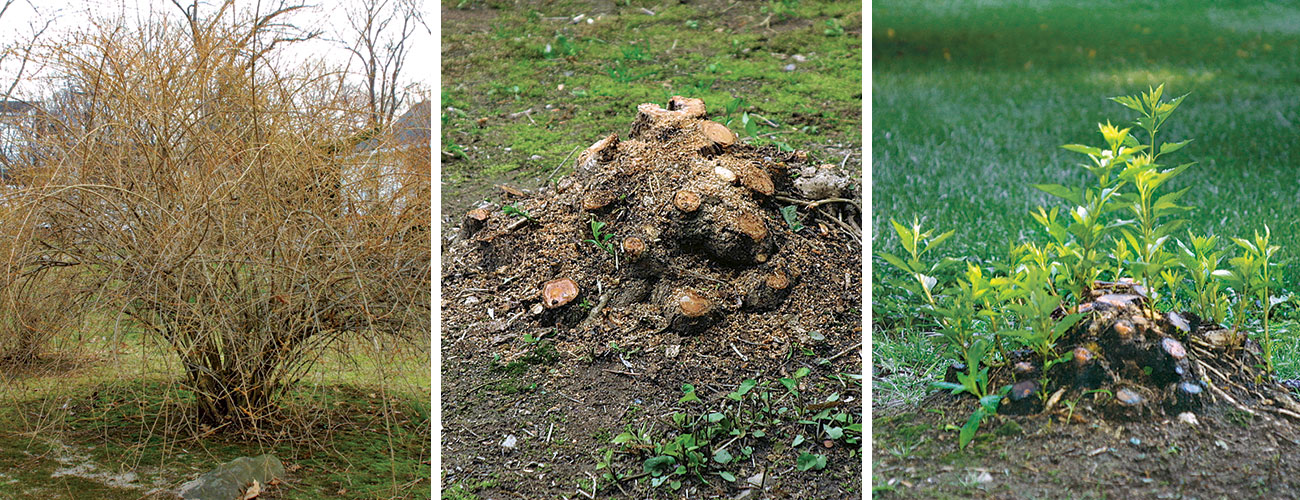
If your cane-growing shrub looks like a heap of unwieldy or poorly flowering stems and branches, it needs more than thinning to get it back into shape. Drastic times call for drastic measures, and the best thing to do is to rejuvenate the plant by removing all of the stems at ground level. Yes, really—all of them. And don’t leave an inch for good measure—cut as close to the ground as possible.
No matter what time of year your shrub blooms, do this type of pruning in the early spring. You may sacrifice flowers for one season, but your plant will thank you with abundant blooms the next. Good candidates for rejuvenation include neglected 25-year-old forsythias and that old privet hedge that has eaten half of the sidewalk.
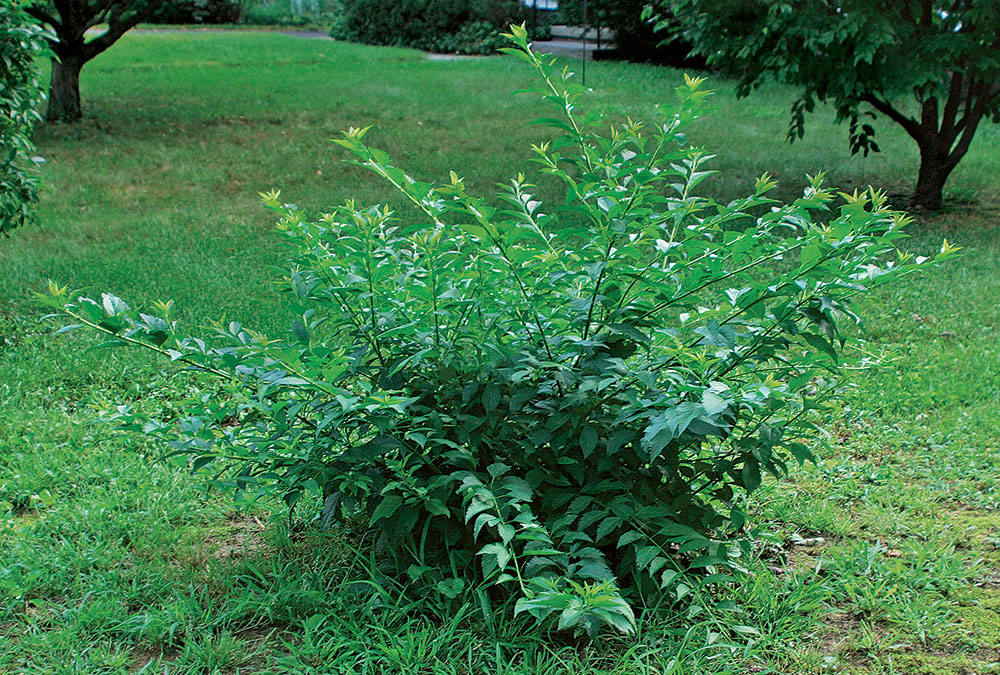
Over the growing season, new shoots will form and grow into stems. Most plants will produce a couple feet of growth if located in the appropriate sun and soil conditions. In the spring of the next year, select the strongest canes to remain, and clip off the weak sisters. In the third season, begin an annual maintenance pruning regimen.
—John C. Fech is a certified arborist and horticulture educator at the University of Nebraska’s Cooperative Extension in Omaha, Nebraska.
All photos, except where noted: Jennifer Benner
Illustration: Melissa Lucas
Fine Gardening Recommended Products

DeWalt Variable-Speed Cordless Reciprocating Saw
Fine Gardening receives a commission for items purchased through links on this site, including Amazon Associates and other affiliate advertising programs.
- 18.31 x 6.13 x 4 inches
- 1-1/8-inch stroke length
- Variable speed trigger with 0-3000 spm
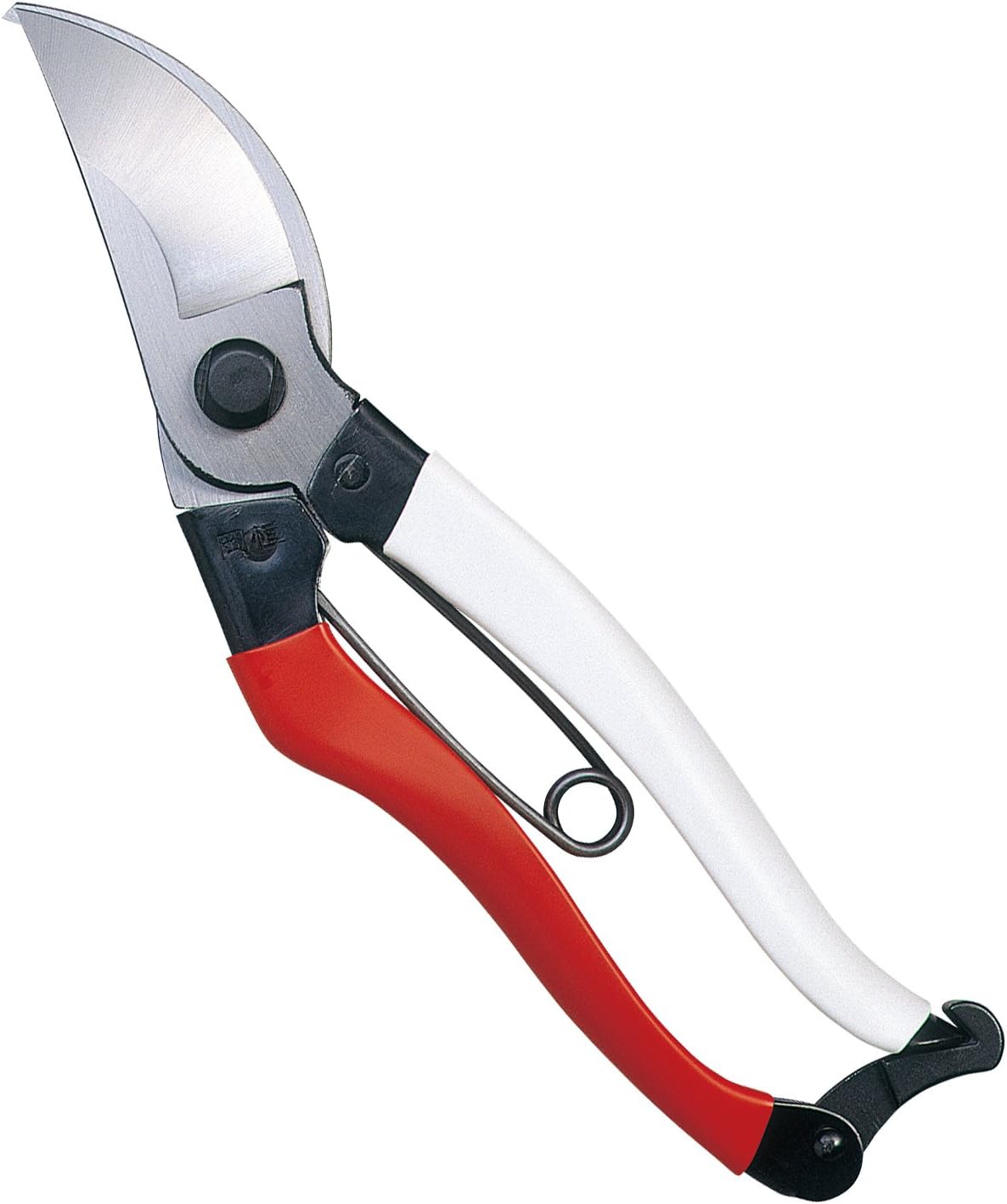
Okatsune 103 Bypass Pruners General Purpose Medium
Fine Gardening receives a commission for items purchased through links on this site, including Amazon Associates and other affiliate advertising programs.
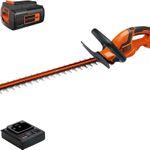
BLACK+DECKER 40V MAX Hedge Trimmer, Cordless, 24-Inch Blade, Battery and Charger Included (LHT2436)
Fine Gardening receives a commission for items purchased through links on this site, including Amazon Associates and other affiliate advertising programs.







Comments
I have 2 golden privets. They are canes, correct? I planted them on either side of my front door and I am surprised how long the branches are. Didn't bank on that! Also, they will be 4 years old next year. I am going to be afraid to cut some of the canes at the base. I know this is the correct method. I don't want to lop them off or shear them into creepy shapes. The outer third of the branches turn lime and then stay yellow all winter. Beautiful.
One of my neighbors has a forsythia cut into a rounded shape. It looks good. I very suggest it. UK coursework help online
Log in or create an account to post a comment.
Sign up Log in